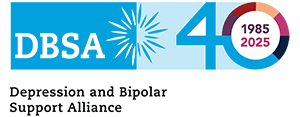Position Title:
Personal and Civil Rights: Safe Gun Ownership
Position Policy (provide brief description of the recommended position / policy)
DBSA advocates for the right of peers to choose their own paths to mental, emotional and physical wellness while promoting structures and practices that advance whole health and accessible care for everyone. Advancing this DBSA value includes a vision for a society where peers not only have the same freedoms enjoyed by other Americans under the U.S. Constitution, either explicitly or adjudicated by the United States Supreme Court, but also have the autonomy to make their own decisions about how to use and apply those civil and human rights. This paper is one in a series about positions of particular relevance to peers that focus on Supreme Court decisions and federal legislation protecting the rights to:
- live in the community
- privacy of personal health information, and
- safe gun ownership
Justification (Explain the need for and the urgency of the position / policy. Attach supporting pages as necessary)
Executive summary of issue
Basic human and civil rights for people living with mood disorders can often conflict with larger societal attitudes. These attitudes can find their genesis in discrimination, often grounded in fear, as a result of being uninformed. As the leading peer-focused organization for people living with mood disorders DBSA has a responsibility to champion the rights of peers through legislative advocacy and thoughtful education and dialogue with those who hold opposing views.
The intersection of rights of peers and society manifests in Second Amendment around the topic of safe gun ownership and the rights of people living with mood disorders to be free from discrimination. The Gun Control Act of 1968 was enhanced in 1993 with the passage of the Brady Handgun Violence Prevention Act stating: “it is unlawful for any person to sell or otherwise dispose of any firearm or ammunition to any person knowing or having reasonable cause to believe that such person has been adjudicated as a mental defective or has been committed to any mental institution.” Key language in this law is “adjudicated” and “committed.” The law does not apply to anyone who has voluntarily sought treatment for or been diagnosed with a mood disorder. Some influencers in mainstream media and legislative forums seek to broaden the legislation applying discrimination based on disability.
Existing policy around issue
DBSA has a long-standing tradition of working toward ending discrimination for people living with mood disorders. In the context of civil rights, unlawful discrimination refers to unfair or unequal treatment of an individual (or group) based on certain characteristics, including disabilities.
The DBSA Position Paper, Stigma and Discrimination, provides the following call to action regarding discrimination: “Devoting resources to reduce and eliminate stigma and discrimination for people living with mood disorders is central to the DBSA mission. DBSA calls upon society to examine how it can more sensitively address these issues through its various institutions and media outlets.”
Relevant legislative or regulatory concerns
The second amendment to the Constitution states “the right of the people to keep and bear
arms, shall not be infringed.” Discriminating against people because they have a mood disorder
to exercise their second amendment rights is in conflict with DBSA Core Beliefs: Mood
disorders, while life threatening, are highly treatable, and people living with a mood disorder
can and do thrive.
Consider: According to a report published by the National Council For Behavioral Health titled: Mass Violence in America, Causes, Impacts and Solutions, August 2019, “People with mental illness account for a small amount of the overall violent behavior in our society. If we could eliminate the elevated risk of violence that is attributable directly to having schizophrenia, bipolar disorder or major depression, the overall rate of violence in society would go down by only 4 percent: 96 percent of violent events would still occur, because they are caused by factors other than mental illness.”1
Further, according to Brady United Against Gun Violence report: The Truth About Suicide and Guns, in 2016 23,000 people used a gun to end their lives, and that attempts of suicide by gun result in death 85% of the time.2 Still this amounts to approximately 1% of individuals living with mood disorders.
Recognizing that people do recover, however; must be juxtaposed against the reality that mood disorders are chronic conditions and not unlike other chronic conditions people can experience episodes: episodes that can result in unhealthy symptoms. During these episodes gun ownership has the potential be a danger to the peer and wider society.
DBSA endorses the recommendations put forward by the National Council for Behavioral Health in the August 2019 report. Among those with highest priority and relevance to DBSA:
- Pass legislation to increase the availability of threat assessment training at the local, state, tribal and national levels.
- Enact state red flag or extreme-risk protection orders that allow the temporary removal of guns from individuals who are known to pose a high risk of harming others or themselves in the near future.
- Fully implement the existing federal background check requirement for firearms purchases.
Using existing education and communication tactics (e-update, DBSA website, chapter communications, advocacy newsletter), DBSA should educate the community on these priorities and encourage DBSA state organizations and chapters to stay informed on the issue in their state and engage in advocacy activities as applicable.
Citations
1 National Council Medical Director Institute. Mass Violence in America: Causes, Impacts and Solutions, August 2019. National Council for Behavioral Health
2 Firearm suicides totaled 22,938. Data were obtained from the CDS Web-based Injury Statistics Query and Reporting System which lags two years behind the current year. Centers for Disease Control and Prevention (2018). National Centers for Injury Prevention and Control, Web-based Injury Statistics Query and Reporting System (WISQARS)


